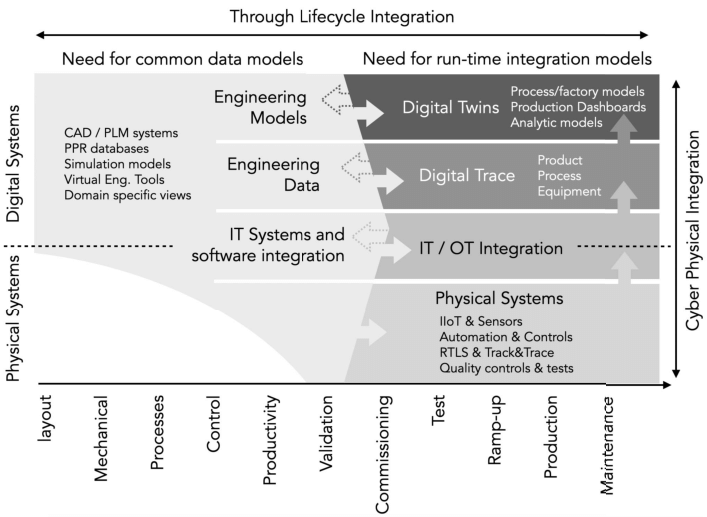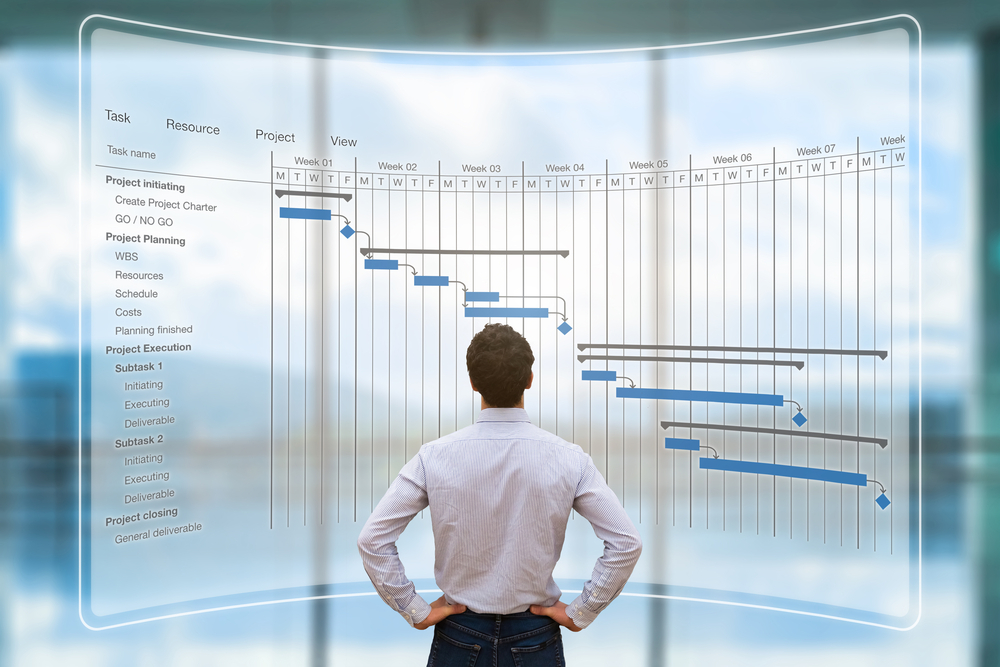In this Article
Engineering integration plays a pivotal role in the successful installation of complex systems, ensuring seamless operation and optimal performance. In this comprehensive guide, we will delve into the installation process in engineering integration, highlighting its importance, key aspects, and best practices.
As engineers, project managers, and industry professionals, understanding and mastering this process is essential for delivering tailored solutions, fostering strong customer relationships, and adopting a complete life-cycle approach. Let's explore the intricacies of engineering integration installation and unlock its potential for success.
The Importance of Engineering Integration in Installation Processes
Engineering integration is the process of bringing together various components, subsystems, and technologies to form a cohesive and functional system. During the installation phase, engineering integration plays a crucial role in ensuring that all individual elements work harmoniously together. It involves meticulous planning, coordination, and execution to achieve optimal performance, efficiency, and reliability of the integrated system.
By focusing on engineering integration during the installation process, several benefits can be achieved. Firstly, it minimises the risk of system failures, malfunctions, or inconsistencies by thoroughly testing and validating the integrated components. Secondly, it maximises system performance by optimising interdependencies and leveraging synergies between subsystems.
Thirdly, it enhances project efficiency and reduces installation time, as a well-integrated system streamlines the overall process.
Understanding the Installation Process

(Source: Bilal Ahmad)
The installation process in engineering integration can be divided into three key phases: pre-installation considerations, installation steps, and post-installation activities. Each phase plays a critical role in ensuring a successful integration.
Pre-Installation Considerations
Before initiating the installation process, thorough planning and preparation are essential. Consider the following key aspects:
- System Assessment: Conduct a comprehensive analysis of the system requirements, design specifications, and integration goals. This assessment provides a clear understanding of the project scope and establishes the foundation for subsequent steps.
- Resource Allocation: Identify the necessary resources, including human capital, equipment, and materials, required for the installation. Ensure that all resources are readily available to prevent delays and streamline the process.
- Risk Assessment: Assess potential risks and develop contingency plans to mitigate them. Anticipating and addressing challenges proactively is vital for minimising disruptions during the installation.
Installation Steps
During the installation phase, attention to detail and adherence to best practices are crucial. Consider the following steps:
- Component Preparation: Ensure that all components are inspected, tested, and prepared for installation. This includes verifying their compatibility, labelling them appropriately, and ensuring they are in optimal condition.
- System Integration: Carefully integrate the components according to the system design. Follow established protocols and standards to guarantee proper connections, alignments, and interfaces.
- Wiring and Cable Management: Employ proper wiring and cable management techniques to ensure efficient signal transmission and minimise the risk of interference or malfunctions. Label all cables and wires for easy identification and maintenance.
- Calibration and Testing: Calibrate and test the integrated system thoroughly to verify its functionality, accuracy, and performance. Conduct both individual component tests and system-level tests to ensure all subsystems work together seamlessly.
Post-Installation Activities
Once the installation is complete, post-installation activities are critical for system validation and long-term success. Consider the following activities:
- System Validation: Validate the integrated system against the original design specifications and performance criteria. Verify that all functional requirements have been met and make any necessary adjustments or modifications.
- User Training: Provide comprehensive user training to ensure that system operators understand its functionality, maintenance requirements, and safety procedures. Well-trained operators enhance system performance and reduce the risk of errors or accidents.
- Documentation and Handover: Compile comprehensive documentation, including system manuals, maintenance procedures, and warranties. Provide a clear handover process to the end users, ensuring they have the necessary information for ongoing support and maintenance.
Key Aspects of Engineering Integration
To excel in engineering integration installations, it is vital to understand and address key aspects of the process. Let's explore three fundamental areas: system integration, the role of an engineering integration manager, and the importance of engineering advice, methods, and tools.
System Integration
System integration involves bringing together individual components, subsystems, and technologies to form a unified and functional system. It requires meticulous planning, precise execution, and comprehensive testing. Key considerations in system integration include:
- Compatibility: Ensure that all components and subsystems are compatible with each other and conform to industry standards and protocols. Compatibility issues can lead to functionality gaps and system failures.
- Interoperability: Verify that the integrated system can communicate and interact seamlessly across all its subsystems. Interoperability is crucial for achieving optimal performance, efficiency, and functionality.
- Scalability: Design the integrated system with scalability in mind. As technology evolves and business needs change, the system should be adaptable and capable of accommodating future expansions or upgrades.
Role of an Engineering Integration Manager
An engineering integration manager is responsible for overseeing the entire integration process. They play a vital role in coordinating different teams, managing resources, and ensuring effective communication. The key responsibilities of an engineering integration manager include:
- Project Planning: Develop a detailed integration plan, considering all aspects such as system requirements, resource allocation, and timelines. This plan serves as a roadmap for successful integration.
- Team Coordination: Coordinate various teams involved in the integration process, including design, procurement, installation, and testing. Effective teamwork and communication are essential for achieving seamless integration.
- Risk Management: Identify potential risks, assess their impact, and develop mitigation strategies. The integration manager should have a proactive approach to address challenges and ensure smooth progress.
Engineering Advice, Methods, and Tools
To ensure successful engineering integration, it is crucial to leverage the right advice, methods, and tools. Consider the following aspects:
- Expert Consultation: Seek advice from experienced engineers and domain experts to address complex integration challenges. Their insights can provide valuable guidance and help optimise the integration process.
- Standardised Methods: Follow industry-accepted standards and best practices for engineering integration. Standardised methods ensure consistency, compatibility, and interoperability.
- Advanced Tools: Utilise cutting-edge software and tools for system modelling, simulation, and testing. These tools facilitate accurate analysis, performance optimisation, and system validation.
The Role of Project Management in Engineering Integration

Project management is essential for successful engineering integration installations. Effective project management ensures timely completion, resource optimisation, and stakeholder satisfaction. Key considerations for project management in engineering integration include developing a comprehensive project plan that outlines all tasks, milestones, and timelines.
A well-defined plan facilitates efficient resource allocation and progress monitoring. They should also identify and mitigate potential risks through risk assessments and contingency plans. Regular risk evaluation and mitigation activities are crucial throughout the integration process.
Finally, fostering effective communication and collaboration among all stakeholders involved is key; clear and consistent communication enhances coordination, minimises misunderstandings, and ensures project success.
‘Chris to insert case study’
Quality and Environmental Management in Installation Processes
In the installation process of engineering integration, quality and environmental management are vital to ensure compliance with regulations, enhance customer satisfaction, and promote sustainability. Consider the following aspects:
Quality Control
Implement robust quality control measures to ensure that all installation activities adhere to established standards and specifications. Regular inspections and audits help identify and rectify any quality issues promptly.
Environmental Considerations
Incorporate environmentally friendly practices during the installation process. This includes waste management, energy-efficient solutions, and adherence to environmental regulations.
Continuous Improvement
Embrace a culture of continuous improvement by seeking feedback, analysing performance metrics, and implementing corrective actions. Regular reviews and assessments help identify areas for optimisation and enhancement.
Mastering the installation process in engineering integration is paramount for achieving successful and reliable integrated systems. By understanding the importance of engineering integration, following best practices, and leveraging effective project management, professionals in the engineering industry can deliver tailored solutions, foster strong customer relationships, and embrace a complete life-cycle approach.
As technology continues to advance, engineering integration will remain a critical aspect of system development and installation. By staying updated on industry trends, incorporating innovative methods and tools, and nurturing a commitment to quality and environmental management, engineers and project managers can excel in the complex world of engineering integration installations.
FAQs
Engineering integration ensures the seamless operation and optimal performance of integrated systems. It minimises the risk of failures, maximises system performance, and enhances project efficiency.
Key considerations include system assessment, resource allocation, and risk assessment.
The installation steps include component preparation, system integration, wiring and cable management, and calibration and testing.
An engineering integration manager oversees the entire integration process, including project planning, team coordination, and risk management.
Effective project management ensures timely completion, resource optimisation, and stakeholder satisfaction through comprehensive planning, risk management, and communication.